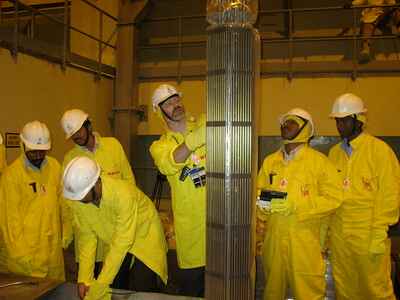10 Energy Conservation Methods Fully Explained
Energy conservation methods include turning-off, natural light usage, LED lighting, Insulation, smart thermostat usage, consumption scheduling, energy efficient usage, and power system upgrade.
These methods are discussed as follows;
Energy Conservation Method 1: Turn Off All Unused and/or Unnecessary Appliances
This is perhaps the most common measure which can be taken to conserve energy. It is also one of the simplest measures.
Some electrical appliances like computers are known to consume a relatively large amount of energy. Others, such as television sets, electric fans, and electric light bulbs tend to remain on even when not in use.
Turning off such appliances is a helpful way to prevent the wastage of electricity, in residential, industrial and commercial scenarios.
Energy Conservation Method 2: Make Use of Natural Light
This measure is specifically aimed at reducing energy consumption on lighting.
Lighting is one of the major consumers of energy in any facility, and resultantly accounts for a significant proportion of energy costs. This is proven by the 2020 energy consumption statistics of the United States, which shows that lighting accounts for about 4% of energy consumption in the residential sector [2].
Using natural light in place of electric lighting systems during the day, is a helpful option. The feasibility and effectiveness of this option may however vary with geographical region, seasonal and climatic conditions, as well as architectural configuration.
A recommendable design to increase the effectiveness of natural light in buildings is to install windows facing North and South, rather than East and West. Also, windows and other light-introducing apertures may be stationed strategically in parts of the building where activity is (or is likely to be) relatively concentrated.
Energy Conservation Method 3: Use LED Lighting in place of Incandescent Lighting
Replacing incandescent light bulbs with Light-Emitting Diode (LED) lights, is one of those measures which illustrates the relationship between energy efficiency and energy conservation.
Although LED lights typically cost more than incandescent lights, they also have a number of advantages over incandescent lights.
One of these advantages is the fact that LED lights are up to 80% more efficient than incandescent lights [3]. As a result, they have a much longer lifespan on the average, than incandescent light bulbs.
In a typical incandescent light bulb, only about 10% of input energy is used effectively, while the remaining 90% is lost as heat. On the other hand, LED lights (on the average); use at least 45% of input energy effectively; thereby minimizing energy losses. These lights also consume about 10% of the total energy consumed by incandescent lights.
While the act of replacing incandescent light bulbs with LEDs is undoubtedly one of the most-simple energy conservation approaches, it is versatile in its applicability.
In residential buildings, offices and commercial/industrial facilities, incandescent light replacement proves to be an effective means of conserving energy, especially when it is carried out in a large scale. The durability of LED lights also implies that it is a fairly sustainable measure.
Energy Conservation Method 4: Insulation
The practice of insulation is most relevant in buildings.
In simple terms, the concept of insulation involves limiting or totally eliminating energy losses in the form of heat, from a building. The most basic aspects include ensuring that leaks in doors, windows, walls, roof and plumbing, are all sealed.
All these activities are aimed toward preventing outflow and/or inflow of unwanted air, so as to maintain the internal temperature in a fairly stable state.
Through the described measures, internal heat can be retained in buildings during the winter; while external heat can be kept out of the buildings in summer. This is an energy conservation measure because it prevents or minimizes expenditure on electricity which would otherwise be needed for heating and cooling purposes.
Asides the simple steps that can be taken to improve internal insulation, other elaborate steps can be taken, such as those which concern the design of the building itself. A few of these building-insulation designs are outlined briefly below;
1). Concrete Block Insulation
As the name implies, this kind of insulation involves the concrete blocks that make up a building.
Concrete block insulation may be internal or external. In both cases, insulating material is incorporated into the building block configuration. In internal concrete block insulation, the apertures in the concrete blocks are filled with insulation material, which is often a synthetic polymer such as polystyrene.
External insulation similarly involves incorporating foreign components into the concrete block structure, but it differs from internal insulation in that the foreign components are installed on the concrete blocks, rather than in the blocks.
Another form of concrete block insulation is the use of precast autoclaved concrete [1]. Two main types of autoclaved concrete include autoclaved cellular concrete (ACC) and autoclaved aerated concrete (AAC).
The materials provide a heat-absorbent framework for buildings, although they are also moisture retentive and must be protected from excessive exposure.
2). Batt and Roll Insulation
Another term used in place of the batt and roll insulation, is blanket insulation.
Batt and roll insulation involves the use of fibers such as fiberglass, as appendages which are added to buildings to serve as a barrier that minimizes external temperature influence.
Typically, batt-and-roll insulation is done using either mineral fibers or natural fibers such as wool. These materials are manufactured in various designs with different sizes, so as to fit into rafters, trusses and joists in the building.

3). Insulating Concrete Forms
Insulating Concrete Forms (ICFs) are structures made from concrete, foam and foam boards, with a wall-like geometry.
These structures are used as wall reinforcements, and generally have a high thermal resistance.
4). Rigid Foam Insulation
This type of insulation is achieved using rigid foam panels.
A major advantage of this method is its versatility. Rigid foam panels can be used in nearly all parts of a building, including the roof, walls and floors. They are also used both internally and externally, as interior and exterior sheaths.
Typical features of rigid foam include structural resilience (relative to other insulation materials), and good heat resistance. Some materials used to manufacture rigid foam panels include polyurethane and polystyrene.
5). Reflective Insulation
Alternatively referred to as ‘radiant barriers’, these insulation systems work by reflecting radiant heat, which is thereby deflected from the building.
The mechanism described above differs from the conventional mechanisms of energy conservation, which primarily involve the resistance of heat flow through conduction and/or convection.
Reflective insulation is often used in combination with other energy conservation designs, such as insulating concrete. In most cases, it comprises of a reflective material such as aluminum, that helps to deflect incident radiant energy from the walls roof, and other surfaces in the building.
Because they work by reflecting incident radiation, reflective systems are suited to extreme hot climatic regions, especially where sunlight is relatively intense and consistent.
6). Foam-In-Place Insulation
Foam-In-Place insulation refers to the installation of foam into already-existent apertures in the building, such as hollows in walls and leakages in walls, plumbing and roofs.
The main advantage of this type of insulation lies in the fact that it can be used to fill the smallest apertures through which energy losses (in the form of heat) can occur. Foam insulation may be installed by injection, pouring, or spraying.
7). Fiber Board Insulation
This method of energy conservation involves the use of rigid fiber boards. These boards are usually composed of wool or fiberglass. They are mainly used in buildings which are exposed continuously to heat. The surfaces of the fiber boards are often composed of canvas or cement.
Energy Conservation Method 5: Smart Thermostat Usage
Here, ‘smart thermostat’ refers to a programmable and efficient thermostat, which can regulate internal temperature conditions.
Energy conservation using a smart thermostat, involves reducing or turning off the HVAC (Heating, Ventilation and Cooling) systems in a building, when appropriate.
Programmable thermostats take continuous inventory of the temperature conditions in a building, controlling the HVAC system based on these conditions. It serves as a helpful approach for minimizing energy wastage by switching off the system when the internal temperature of the building is appropriate.
Programmable thermostats are said to reduce energy wastage (and cost) by 5%-15% on average [6].

Energy Conservation Method 6: Change in Daily Energy-Consumption Approach
In order for energy conservation to be achieved, it is necessary to adjust some routine activities that involve the use of energy.
Tuning off standby appliances is one simple way to adjust the daily energy-consumption approach. Examples of such appliances include coffee makers, game consoles, wall computers and wall chargers.
Some high-load appliances like water heater and washing machine can be used less-intensively, by reducing the volume of laundry and water for each appliance respectively.
Energy Conservation Method 7: Utilization of Energy-Efficient Appliances
LED lights are a typical example of energy efficient appliances.
These appliances are relatively modern, and built to consume less power while doing more work.
Energy-efficient appliances generally cost more than conventional appliances at the point of purchase. However, they compensate significantly for this difference through savings in operating cost. Energy conservation by the use of energy-efficient appliances usually ranges from 30-50 percent (in energy savings) on average.
Energy Conservation Method 8: Power Strip Usage
Power strips are simply the devices which provide an array of multiple power points (sockets) for connecting appliances to the power supply.
These devices derive their name from the fact that they provide an array or ‘strip’ of ‘power’ points.
While optimizing the number of appliances that can be connected to the power supply outlet; power strips also provide a means by which energy can be distributed effectively without placing excessive direct load on the main terminal.
Power strips may improve energy conservation also by reducing the amount of time required to power rechargeable appliances. An enhanced type of power strip (the ‘smart’ power strip) minimizes energy losses by automatically shutting down appliances that are not in use.

Energy Conservation Method 9: HVAC System Upgrade
While there are several possible methods of energy conservation through structural and architectural insulation, using an improved HVAC (Heating, Ventilation and Cooling) system is yet another viable option.
It is important to upgrade the HVAC system in buildings, especially where the other methods of temperature regulation are auxiliary and must be augmented. Using effective, energy-efficient HVAC systems will reduce energy consumption rate and cost, significantly.
Energy Conservation Method 10: Energy-Efficient Windows
This measure is simply one of the methods of building-insulation, however it is discussed separately due to its relative importance.
Low-E coating, gas-filled windows are a good mechanism for reducing energy (heat) loss in buildings within extreme-weather regions. These windows provide a means of energy conservation that amounts to 10-30% in energy savings, on average. They can also save between $20-$95 in yearly energy expenses [5].
Energy Conservation Method 11: Resolution of Existing Electrical Problems
Electrical problems in any building or facility often leads to significant energy losses [4].
Examples of such potential problems include power instability and recurrent surges. Because of the alternating load which is caused by such problems, they are likely to waste energy over time. This implies that resolving such electrical problems will help to conserve energy, while preserving and improving the efficiency of electrical appliances in the building/facility.
Conclusion
Energy Conservation can be achieved by the use of any (or a combination) of some existing measures.
In general, the conservation of energy is carried out through the elimination of potential pathways of energy loss and/or wastage.
One of such potential pathways is the apertures in a building.
Through such apertures, which include leaks and cracks in walls and roofs, windows, and doors; energy in the form of heat, can be lost significantly. Due to this understanding, energy conservation measures include architectural modifications to reduce the loss of energy.
Insulation is a good example of such measures. It basically involves fortifying parts of a building with high thermal-resistance materials like fiberglass, polystyrene and wool.
The use of energy-efficient windows may also help to minimize energy losses from a building. Low-E coating, double-pane windows are a good example of this category. There are also energy-efficient appliances, which consume less energy for more output. These can serve to improve the energy conservation of buildings.
A smart thermostat can effectively regulate the Heating, Ventilation, and Cooling (HVAC) system in a building. These devices consistently monitor the internal temperature of the building and reduce or shut-down the HVAC system accordingly.
Power strips provide a means by which the direct load on a single power outlet can be reduced. While optimizing the number and effectiveness of the appliances used in a building, they also minimize potential wastage of energy.
Electrical problems may cause continuous fluctuation, power surges, and damage or inefficient operation of appliances. Therefore, resolving electrical problems is another potentially effective way to conserve energy.
References
1). Dejtiar, F. (2019). “What is Autoclaved Aerated Concrete (AAC)?” Available at: https://www.archdaily.com/921856/what-is-autoclaved-aerated-concrete-aac. (Accessed 8 February 2022).
2). EIA (2021). “How much electricity is used for lighting in the United States?” Available at: https://www.eia.gov/tools/faqs/faq.php?id=99&t=3. (Accessed 8 February 2022).
3). Howard, T. (2018). “Environmental Advantages of LED Lights.” Available at: https://blog.lightup.com/environmental-advantages-of-led-lights/. (Accessed 8 February 2022).
4). Lamendola, M. (2017). “Six Ways to Address Energy Losses.” Available at: https://www.ecmweb.com/electrical-testing-old/article/20902826/six-ways-to-address-energy-losses. (Accessed 8 February 2022).
5). Mehtalia, J. (2021). “How to conserve energy at home.” Available at: https://www.breezyscroll.com/lifestyle/how-to-conserve-energy-at-home/. (Accessed 8 February 2022).
6). Peffer, T.; Perry, D.; Pritoni, M.; Aragon, R. C. (2013). “Facilitating energy savings with programmable thermostats: Evaluation and guidelines for the thermostat user interface.” Ergonomics 56(3). Available at: https://doi.org/10.1080/00140139.2012.718370. (Accessed 8 February 2022).


